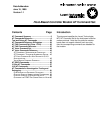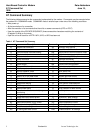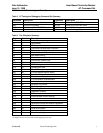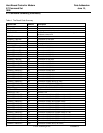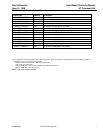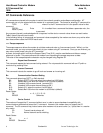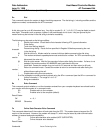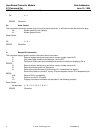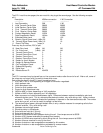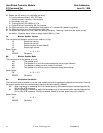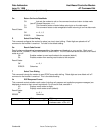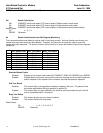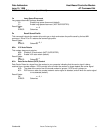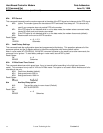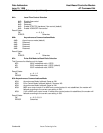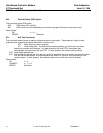
Data Addendum Host-Based Controller Modem
June 15, 1998 AT Command Set
AT Command Reference (continued)
Version 1.0 Lucent Technologies Inc.
9
The ATI11 result has two pages; the user must hit a key to get the second page. See the following example:
ati11
Description K56flex connection V.90 Connection
--------------- ------------------ ---------------
1 Last Connection 56K V.90
2 Initial Transmit Carrier Rate 28800 28800
3 Initial Receive Carrier Rate 50000 49333
4 Final Transmit Carrier Rate 28800 28800
5 Final Receive Carrier Rate 50000 49333
6 Protocol Negotiation Result LAPM LAPM
7 Data Compression Result V42bis V42bis
8 Estimated Noise Level 152 152
9 Receive Signal Power Level (-dBm) 25 25
10 Transmit Signal Power Level (-dBm) 16 16
11 Round Trip Delay (msec) 4 4
Press any key to continue; ESC to quit.
12 Near Echo Level (-dBm) NA NA
13 Far Echo Level (-dBm) NA NA
14 Transmit Frame Count 3 3
15 Transmit Frame Error Count 0 0
16 Receive Frame Count 0 0
17 Receive Frame Error Count 0 0
18 Retrain by Local Modem 0 0
19 Retrain by Remote Modem 0 0
20 Call Termination Cause 0 0
21 Robbed-Bit Signaling 00 00
22 Digital Loss (dB) 6 6
23 Remote Server ID 4342C3 NA
OK
The ATI11 command may be issued from on-line command mode or after the end of a call. After a call, some of
the values are no longer valid; it's useful to know which ones.
Each of the line items in the ATI11 result is explained next:
1.
V.90, 56K, V.34, or V.32 depending on the type of connection negotiated.
2.
Initial upstream rate
3.
Initial downstream rate
4.
Current or final upstream rate
5.
Current or final downstream rate
6.
LAPM or MNP or None, depending on V.42 negotiation
7.
V42bis or MNP or None, depending on V.42 negotiation
8.
Mean-square error of received downstream signal. Difference between received constellation point and
reference decision point. This is a dimensionless decimal number, only valid during a call. Higher numbers
are worse. There's no absolute threshold of goodness; it depends on the downstream data rate. The number
varies during a call, so it can be useful to sample it a few times.
9.
The received signal power, although labeled -dBm, is only a relative measure for comparing calls to/from
different locations. Only valid during a call.
10.
Upstream transmit signal power.
11.
Round-trip delay in milliseconds.
12.
Echo levels are valid for V.34 only.
13.
Echo levels are valid for V.34 only.
14.
Number of LAPM frames sent upstream during this call. Count wraps around at 65535.
15.
Number of REJ frames received at the analog client modem.
16.
Number of LAPM frames received by client during this call. Count wraps around at 65535.
17.
Number of frames received in error by the client.
18.
Number of retrains or rate renegotiations requested by this modem.
19.
Number of retrains or rate renegotiations requested by remote modem.



